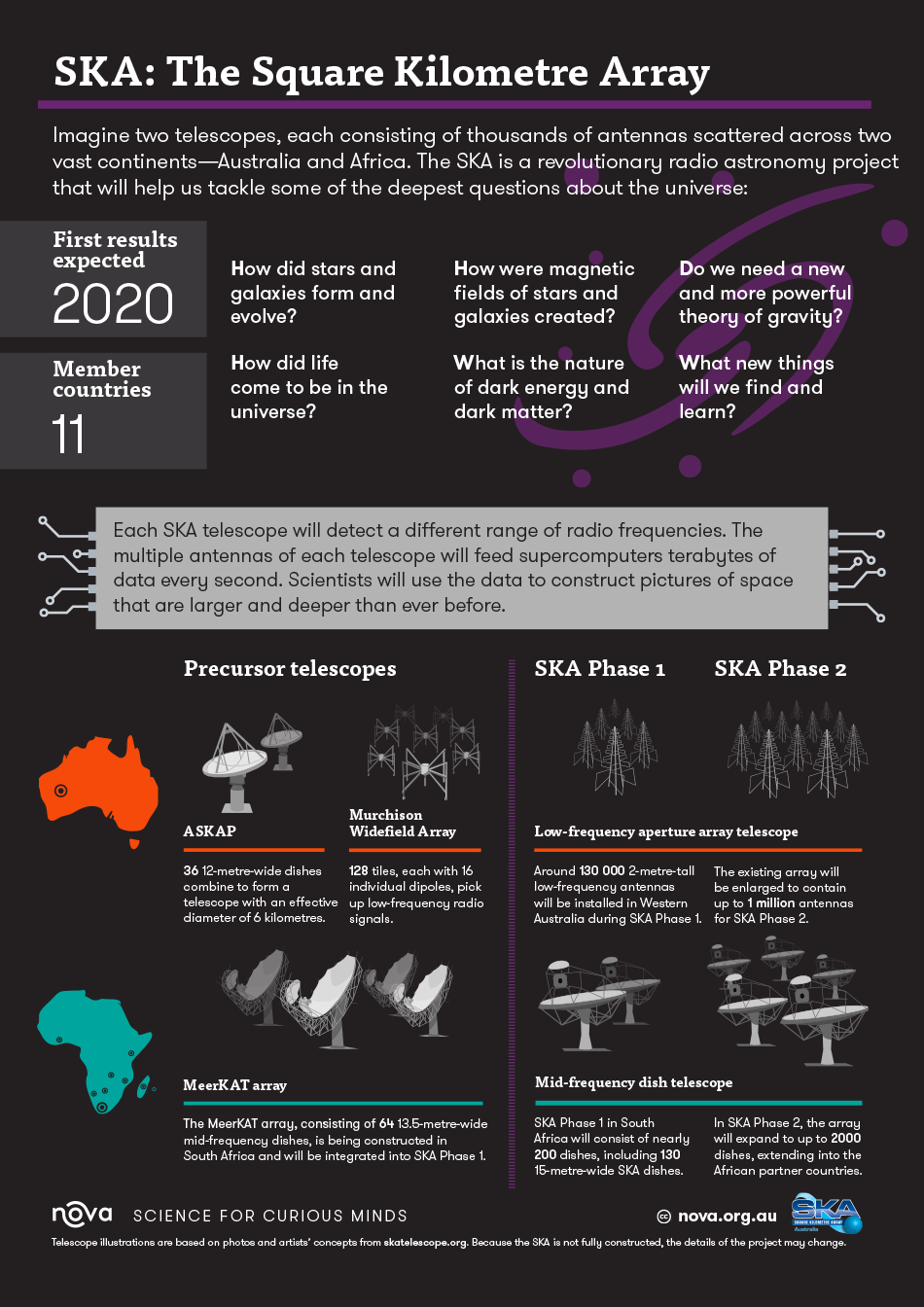- Home
- Infographics
- SKA: The Square Kilometre Array
SKA: The Square Kilometre Array
Thousands of antennas will work together to answer deep questions about the universe. This is the Square Kilometre Array.
Imagine two telescopes, each consisting of thousands of instruments scattered across two vast continents—Australia and Africa. The SKA is a revolutionary radio astronomy project that will help us tackle some of the deepest questions about the universe:
- How did stars and galaxies form and evolve?
- How were magnetic fields of stars and galaxies created?
- Do we need a new and more powerful theory of gravity?
- How did life come to be in the universe?
- What is the nature of dark energy and dark matter?
- What new things will we find and learn?
First results expected: 2020
Member countries: 11
Each SKA telescope will detect a different range of radio frequencies. The multiple instruments of each telescope will feed supercomputers terabytes of data every second. Scientists will use the data to construct pictures of space that are larger and deeper than ever before.
Precursor telescopes
ASKAP (Australia)
36 12-metre-wide dishes combine to form a telescope with an effective diameter of 6 kilometres.
Murchison Widefield Array (Australia)
128 tiles, each with 16 individual dipoles, pick up low-frequency radio signals.
MeerKAT array (South Africa)
The MeerKAT array consists of 64 13.5-metre-wide mid-frequency dishes and is being constructed in South Africa.
SKA Phase 1
Low-frequency aperture array telescope (Australia)
Around 130 000 2-metre-tall low-frequency antennas will be installed in Western Australia during SKA Phase 1.
Mid-frequency dish telescope (South Africa)
SKA Phase 1 in South Africa will consist of around 200 15-metre-wide midfrequency survey dishes.
SKA Phase 2
Low-frequency aperture array telescope (Australia)
The existing array will be enlarged to contain up to 1 million antennas for SKA Phase 2.
Mid-frequency dish telescope (South Africa)
In SKA Phase 2, the array will expand to up to 2000 dishes, extending into the African partner countries.
Further information
Telescope illustrations are based on photos and artists’ concepts from skatelescope.org. Because the SKA is not fully constructed, the details of the project may change.






